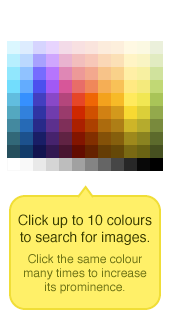I recently talked to Eileen McComb, Director of Communications with
Benjamin Moore, to answer some questions I had.
*Just to let you know, I neither represent BM, nor am compensated for my articles. I specify several different brands of paint, but certainly feel BM's consumer relations are top notch.
Okay, so now that I have that disclaimer taken care of, let's get to the fun stuff!
 Q:
Q:I've alway wanted to know this: who names your paint colors?
Ans: Our internal color team creates and initially names the colors, based on the theme of the color introduction and collections. For instance, our new Affinity Collection (144 colors introduced in 2007) was inspired by International, Nature, and Harmonic influences and was created to appeal to the high end of the market.

When you look at the names of each color, you’ll get a read as to the names of places, cultural influences and mood--all evoking connections to the color. We have noticed that a good number of designers and consumers identify the color by name first and the number is for those who are “wired” to relate to color on that level.

Each of the Affinity colors is important enough to stand on its own, yet work in harmony with each other…something that is very appealing to designers and consumers when creating palettes. Three names initially were assigned per color so we would arrive at the most appropriate name, eliminating any that were used before.
Occasionally, we work with outside color consultants to gain a more “neutral” response to the color direction, but Benjamin Moore drives the naming to ensure they reflect the premise of the collection in the first place.

With our Color Preview collection introduced in 2000 – 1484 colors created to bring us into the 21st century with clean, saturated color – Benjamin Moore employees “adopted” up to 2 colors each and named them. We’re all consumers and this tells us how people view color and the connection that they have with it. It is an emotional and very personal element in design, as
everyone has their favorite color and they want to “own” it.
 Q:
Q: What happens to "retired" older colors?
Ans: A Benjamin Moore color is never “retired”. Just because we may not produce the merchandising materials to support a color doesn’t mean that a color is not accessible. The color formulation is retained in our database and is always accessible.
 Q:
Q: How frequently do you introduce new colors?
Ans: Imagine an unlimited number of custom colors that can be accessed. Consumer would never be able to embrace all those colors…that’s why we design collections that reflect current trends and directions. Benjamin Moore has approximately 3500 colors that we offer to Designers and an edited number at retail for consumers.
 Q:
Q: You have a cross-marketing relationship with Pottery Barn, by offering a specific
palette of colors each season to go along with the furniture in their catalog. What led to the departure this past spring from traditionally "Pottery Barn-esque colors?
Ans: Benjamin Moore colors are actually selected by Pottery Barn, not by Benjamin Moore.
 Q:
Q: When it comes to trends, people may head for what is "in" at the moment, but how does BM reconcile that homeowners only repaint once every 5-10 years, whereas trends are out within a season or two?
Ans: Actually, homeowners paint on a more frequent basis, according to our data – every 2 to 4 years for interiors. Often times that is driven by life changes such as moving, marriage, births, empty nesting. A trend is a long term direction whereas a “fad” is a short lived influence, closely tied to seasonality and news/celebrity cycles. Benjamin Moore tracks trends and looks to present color collections that have broad appeal over many years.
For more juicy tid bits on paint color trends, Jennifer at
Design Hole recently got the inside scoop from BM's trend forecaster.
Interesting! What are your thoughts about fads versus trends? Can you tell the difference?
all 2009 Color Trends images copyright Benjamin Moore
 Ava's Pizzeria is a family-friendly restaurant on the eastern shore of Maryland.
Ava's Pizzeria is a family-friendly restaurant on the eastern shore of Maryland. Starting from scratch, they were working with a completely blank slate. Her client initially only wanted a colored accent wall, and luckily, Annie was able to convince them to go all out, and add color everywhere, including the ceilings!
Starting from scratch, they were working with a completely blank slate. Her client initially only wanted a colored accent wall, and luckily, Annie was able to convince them to go all out, and add color everywhere, including the ceilings!  Establishing a mood,
Establishing a mood,  defining distinct dining areas,
defining distinct dining areas,  and really solidifying the character of the restaurant- it turned out really nicely, don't you think?
and really solidifying the character of the restaurant- it turned out really nicely, don't you think?











































